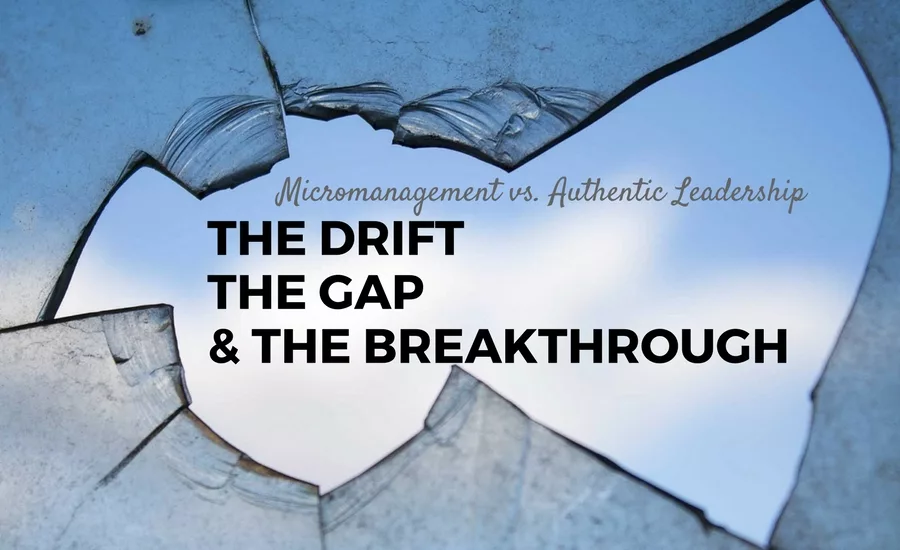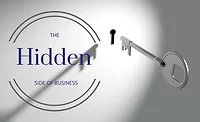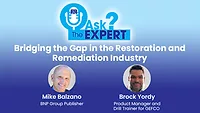The Drift, The Gap, and The Breakthrough
Micromanagement vs. Authentic Leadership

Recently in working with a couple companies in my consulting business, two GM’s expressed the concern that if everything in the business was working, and they delegated and trusted their key people to get their jobs done, what would be left for them to do? Good question! That’s what this article is speaking to.
The real issue is in the mistaken thinking; if I am not busy checking on everything, managing and watching every detail with everyone always in the whole business, I don’t know what my job would look like. Another way to say this is, what’s left for me to do if everyone gets their job done? The problem with this management behavior is it very quickly becomes a self-fulfilling prophecy. What leaders fail to realize is that their micromanaging every detail management style keeps people in a box requiring, waiting for, expecting, and finally needing more of that very same management style. Once you have trained employees in being managed that way, they don’t know what to do without it, or are simply afraid to take actions without it. Clearly that’s NOT what business owners really want and need.
So how do we begin to step away from that type of managerial behavior?
Step #1: Avoiding the Drift
The first step is to know there is a better way to manage your teams in maintaining high levels of motivation and productivity. And for those of you concerned about what to do if you actually do let go and let your teams step up, you really don’t have anything to worry about. There are always more important things for you to do. Because, as long has you have teams of people, you will have the potential constraints of their humanity, and the need for you to coach and train them. There will always be the be the need for leaders to set the future direction, and create the vision for the coming year. Your time is best spent in being proactive towards a powerful and successful future rather than reactive to immediate right now today in your face concerns. If you look at your day to day reality, really look at how things go in your business, it’s not hard to see that even when things are working great, there are places where things wind down.
Let’s call that the drift. In the best of circumstances, even in the most successful businesses, people work hard, sometimes long days, deal with stressed out customers, and challenging circumstances, and of course they get tired. They drift toward winding down, slowing down, business as usual. The drift is always moving toward being a little more critical, cautious, safe, smaller, comfortable. Always a contraction. The really important thing to watch and manage here is, in the world of the drift, the circumstances are always telling you what you can or cannot do. The reason this is important is because, as a leader, if you don’t pay attention to managing this, you will slowly watch individuals and sometimes whole teams drift towards being reasonable, giving up what is wanted and needed, and settling for what the circumstances say they can have. Any of these sound familar?
- You can’t make more sales because things are always slow this time of year.
- You can’t close more jobs any faster because your staff are maxed out and you need to hire more people.
- You can’t have higher GP margin because the subs can’t afford to do the work for what you offer now, or, the adjusters won’t pay you for it.
- The fire dept. personnel can’t legally refer fires to you.
- The adjusters can’t even be found anymore.
- The agents say all claims go to a 1-800 number.
That’s the drift. Always a circumstance that lives beyond your control and ability to the results you really want. Always a reason why someone can’t perform the way you need and want. The experience of allowing any of this to persist in any business is too painful to describe here, and very, very expensive. Reasonable circumstances can and will persist until someone intervenes with some leadership. That’s where you come in.
When you make a commitment to lead others, you are choosing to do whatever it takes to drive success for the business. The most effective way you can do that is to be responsible for the tendency towards the drift. Because that’s what stops your people, that’s what they trip over, that’s what is between them and stepping up to their greatest success. The success of the business and its future depends on your ability to lead and inspire your teams forward through what may seem like insurmountable obstacles. They need your leadership, commitment, and unreasonableness to point them in the right direction. So how do we best do this? By making the difference between what people drift towards and what you really want really, really obvious.
Step #2: Managing the Gap
Let’s call that the GAP. The gap is the difference, any difference, between what you want and what you get. It’s not always a problem situation. It could be your next challenge, like the difference between where you finished up last quarter and the attainment of the next higher goal for your new sales campaign. No matter what the size of the gap is, large or small, or whether it’s really a critical challenge or the next sales game, the more obvious and distinct you can make it, the easier it will be for your teams to take action, go to work on the plan, and drive towards results.
Your power and leverage as a leader is in making the attainment of any goal as real as possible. That includes the why of it. Therefore, whenever you start anything, before you start, first set the context. Not the how, the why.
Just like slides # 76, #77 says in the Netflix Culture Deck, set the context not the controls. "If you want to build a ship, don't drum up the people to gather wood, divide the work, and give orders. Instead, teach them to yearn for the vast and endless sea." “The best managers figure out how to get great outcomes by setting the appropriate context, rather than by trying to control their people.” Another way of saying this is, you are controlling the narrative. You are turning the story from “it can’t be done to it can be done, it will be done, we have this, we are winning.” This is bold, powerful, unreasonable leadership. The completely practical side to this is, by the proactive action of making goals really apparent and attainable, and setting the context for the attainment, your teams will now perceive every situation and circumstance that happens as evidence for moving towards the goal. They will concentrate on everything that helps them meet their goals and overlook everything else. Context brings focus, clarity, and inspires action.
Therefore, the clarification of the goal always belongs at the beginning, because, this is what will determine the outcome. By deciding in advance, you have established what is important, and your teams will see nothing else. Your teams view of circumstances will shift from what previously looked like a problem and barrier to an opportunity that is the next step in moving them closer to their goal.
The importance of inspiring this form of leadership for your teams is critical to the success of your company. What you do as a leader to prepare and design your business for this is important. The difference in outcomes can be the difference between success and failure; it can be the difference between your teams winning, building leadership around you, and the business growing, or the business profits flat lining, sour morale, and turnover. Ultimately, it’s the difference between your teams really winning and having breakthroughs in performance, or not.
To bring this all together…if you do a good job of being aware of the drift, managing your teams towards the leading edge of the gap, and setting a powerful context for the achievements of the goal, breakthroughs will happen.
Step #3: The Breakthrough
The Breakthrough. Breakthrough defined as more than just mere improvements. A breakthrough is a sudden and dramatic increase in someone’s performance. It’s not predictable, you didn’t see it coming. Of course, you welcome it, you just didn’t expect it. Their recent performance looked like they would predictably continue successfully, but then something happens that dramatically exceeds your expectations. Breakthroughs in people’s performance are what happens naturally when people are thriving at work. The logic that leads to breakthrough performance is, if you build your business in a way that supports breakthroughs, then that’s exactly what happens. The measure of successful and powerful leadership is individuals and teams are having breakthroughs in their performance with ease on a regular basis.
Looking for a reprint of this article?
From high-res PDFs to custom plaques, order your copy today!






